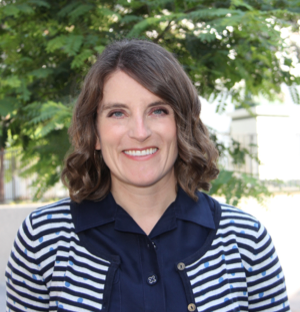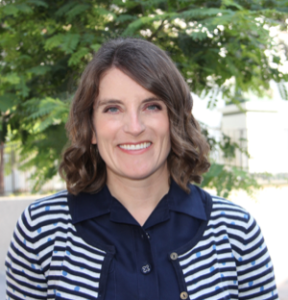
“The Most Powerful Student Success ‘Intervention'”: NISOD & ACUE’s Collaboration
ACUE and the National Institute for Staff and Organizational Development (NISOD) officially launched a  major collaboration to promote faculty and student success through excellence in instruction in May 2019 at NISOD’s International Conference on Teaching and Leadership Excellence.
major collaboration to promote faculty and student success through excellence in instruction in May 2019 at NISOD’s International Conference on Teaching and Leadership Excellence.
Through the collaboration, ACUE is offering Regional Seminars hosted by NISOD member institutions to provide faculty with a unique, blended-learning opportunity to earn credit toward ACUE’s Certificate in Effective Collegiate Instruction.
NISOD executive director Edward Leach and ACUE president and co-founder Jonathan Gyurko delivered the below remarks during the plenary luncheon.
Ed Leach, Executive Director
National Institute for Staff and Organizational Development
 “Last November, NISOD formed a new collaboration with the Association of College and University Educators. We have a continuing goal of bringing new benefits and resources to NISOD members, and our collaboration with ACUE does just that.
“Last November, NISOD formed a new collaboration with the Association of College and University Educators. We have a continuing goal of bringing new benefits and resources to NISOD members, and our collaboration with ACUE does just that.
“Founded in 2014, ACUE partners with colleges and universities to prepare and credential faculty in effective instruction. Through ACUE’s credit-bearing, online courses, faculty members have an opportunity to learn about and strengthen their use of proven teaching techniques.
“Faculty also earn the only nationally recognized teaching credential endorsed by the American Council on Education and recognized by NISOD and other major associations. ACUE partners with community and technical colleges and helps to expand the impact of teaching centers as part of an institution’s strategic plan for faculty and student success. Many NISOD members are already partnering with ACUE, including Miami Dade College, Kansas City Kansas Community College, Truckee Meadows Community College, Lamar Institute of Technology, among others. Joining us today is Dr. Jonathan Gyurko, ACUE’s president and co-founder.
“When Jonathan and I started discussing the missions of our two organizations, we really hit it off, and I knew right away that we shared the same goals: to provide high-quality resources to faculty, to discover and share new approaches, and to help many more students be successful. Please join me in welcoming to the stage Dr. Jonathan Gyurko.”
Jonathan Gyurko, President and Co-Founder, Association of College and University Educators:
“Thank you, Ed, for that wonderful introduction and the opportunity to work together. And congratulations on a phenomenal conference and everything that you do for your members.
phenomenal conference and everything that you do for your members.
“Today, there are so many ‘student success’ interventions underway. We’ve got guided pathways and intrusive advising, digital alerts and adaptive courseware, shifts to co-requisite instruction, career centers and academic centers—the list goes on.
“As important as all these things are, we know that the most powerful student success ‘intervention’ is right here among us—our faculty. No one else is in a better position to make a bigger impact. And studies show: Students are more than twice as likely to go on to productive careers and rewarding lives when faculty inspire them, take an interest in their lives, and teach in ways that create meaningful, academically challenging, and relevant learning experiences. No surprise to anyone here today.
“At ACUE, our single-minded focus is to ensure that every faculty member in the country—full-time and part-time—is prepared and supported to teach well, to ensure that every student experiences the engaging and inspiring education we want for them all.
“In just a few short years, over 5,600 faculty members have earned an ACUE credential, and they’re making a measurable, demonstrable impact. Through research studies with our partner colleges, we see stronger student engagement and growth mindset, improved grades, fewer withdrawals, and closed completion gaps among students from different backgrounds when taught by ACUE-credentialed faculty.
“Together with NISOD, we’re reaching and supporting more faculty through new NISOD/ACUE Seminars that we’re hosting with NISOD member institutions across the country this coming academic year. And we’ll be calling for the next round of host sites later this summer.
“Ed and I will be sharing more about ACUE and NISOD’s collaboration at our session this afternoon, so I’d like to close with a short reflection from a faculty member at one of our community college partners. Like many of us, [she] has deep subject matter expertise but never really had any comprehensive preparation to teach with evidence-based practices until she earned her ACUE credential. Here’s what she shared:
‘I used to believe my job was to deliver knowledge—to “give” psychology to my students, and I didn’t think I needed to change my teaching. But I tried some new approaches. Sometimes they’d go really well. Sometimes I’d need more practice. And my students got more engaged. They’re completing their readings because they know I’m going to ask more questions. They’re applying knowledge in ways that I would never have expected. They’re more comfortable coming to speak with me, and I understand a lot more about where they’re coming from. Now I see that my job is to facilitate their learning. Reaching each and every student requires a lot of different approaches, and I’m more thoughtful about what I’m doing because every minute is precious.’
“Every minute is indeed precious, and I thank you for giving me a few of yours. Thank you, and enjoy the rest of the conference.”



